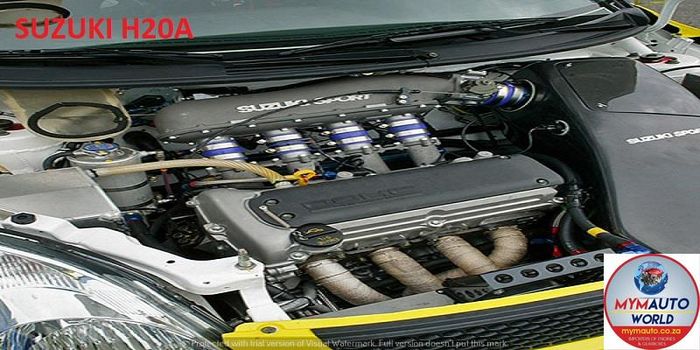Discovering the Inner Operation of a Compact Car's Engine System
As chauffeurs, we often consider approved the intricate procedures that happen within the confines of our lorry's engine system. The small yet complex equipment that moves us onward is a wonder of engineering accuracy and sychronisation. From the controlled surges in the burning chamber to the meticulous timing of gas injection, every part plays a vital role in the smooth operation of the engine. In this expedition of a compact automobile's engine system, we will unwind the inner functions of this mechanical symphony, clarifying the mysteries that drive us ahead on our day-to-day journeys.
Burning Refine Review
The combustion process in a portable vehicle's engine system is a vital device that efficiently converts gas right into power to power the lorry. This process happens within the burning chamber of the engine, where gas and air mix, stir up, and create controlled explosions. The combustion procedure contains four primary phases: consumption, exhaust, compression, and power.
During the intake phase, the piston moves downward, attracting in a mixture of air and gas right into the combustion chamber. The following stage, compression, entails the piston moving upwards, compressing the air-fuel combination to enhance its potency. Ultimately, in the power phase, the spark plug stirs up the compressed blend, causing a quick expansion of gases that requires the piston back down. This down activity generates the power required to drive the lorry. In the exhaust phase, the burned gases are removed from the combustion chamber through the exhaust shutoff, preparing the chamber for the following cycle. This cyclic combustion procedure is fundamental to the operation of a small lorry's engine system, making sure reliable energy conversion for propulsion.
Piston and Cyndrical Tube Communication

The piston's accurate fit within the cylinder is vital for keeping optimal compression and preventing energy loss throughout burning. Limited clearances in between the piston and cyndrical tube walls make certain efficient sealing, allowing the piston to relocate efficiently without enabling gases to leakage past. Appropriate lubrication is also important to lower rubbing and wear in between these components, improving durability and efficiency.
In addition, the layout and products utilized in manufacturing the piston and cylinder impact engine efficiency and resilience. Modern engines typically utilize light-weight yet durable materials like aluminum alloys for pistons and cyndrical tube liners to reduce inertia and improve thermal efficiency. In general, the unified communication between the piston and cylinder is essential to the engine's functionality and overall efficiency.
Gas Injection System Functionality
Gas injection systems in portable vehicle engines play a crucial role in precisely providing gas to the combustion chamber for controlled and reliable ignition. The fuel shot system operates by infusing gas right into the burning chamber at the ideal moment during the visit the site engine's operation (opel corsa engine). This specific timing guarantees that the gas blends equally with the air for appropriate burning, bring Recommended Reading about boosted gas effectiveness and lowered emissions
There are primarily 2 kinds of fuel injection systems made use of in small lorry engines: port fuel shot (PFI) and straight fuel shot (DFI) PFI systems inject gas right into the intake port before the consumption shutoff, while DFI systems inject gas directly right into the burning chamber. Both systems have their advantages, with DFI using far better fuel atomization and PFI supplying an extra affordable remedy.
Comprehending Engine Air Conditioning Devices
Efficient procedure of a small car's engine relies greatly on the efficiency of its cooling mechanisms. The cooling system in a portable automobile usually consists of numerous elements working with each other to control the engine temperature. Recognizing these engine air conditioning mechanisms is essential for preserving the performance and long life of a small vehicle's engine system.

Exhaust System Elements Explained
The optimal functioning of a portable car's engine air conditioning mechanisms depends on a corresponding system known as the exhaust system, which comprises different essential elements for ensuring effective exhausts and engine performance. The exhaust manifold gathers exhaust gases from the engine's cyndrical tubes and routes them to the catalytic converter.
One essential element of the exhaust system is the oxygen sensing unit, which keeps an eye on the oxygen degrees in the go exhaust gases to aid manage fuel intake and guarantee ideal engine efficiency. opel corsa engine. Furthermore, the resonator may exist in some exhaust systems to minimize sound levels. Overall, the exhaust system plays an essential role in preserving engine performance, reducing damaging exhausts, and guaranteeing a quieter driving experience for small lorry proprietors

Conclusion
In final thought, the portable vehicle's engine system is a complicated mix of parts that interact to help with the combustion procedure, transform gas right into power, and expel waste gases. Understanding the inner functions of the engine system, consisting of the piston and cyndrical tube communication, gas injection system, engine cooling mechanisms, and exhaust system components, is important for keeping optimum efficiency and performance of the lorry.
The burning procedure in a portable lorry's engine system is a crucial mechanism that efficiently converts fuel into power to power the vehicle.Fuel injection systems in compact lorry engines play a critical role in precisely supplying gas to the burning chamber for effective and controlled ignition.There are primarily 2 kinds of gas injection systems used in compact vehicle engines: port gas shot (PFI) and direct fuel shot (DFI) Recognizing these engine air conditioning systems is important for maintaining the efficiency and long life of a small car's engine system.
The optimal performance of a small car's engine cooling devices depends on a complementary system known as the exhaust system, which consists of numerous vital components for ensuring reliable discharges and engine performance.